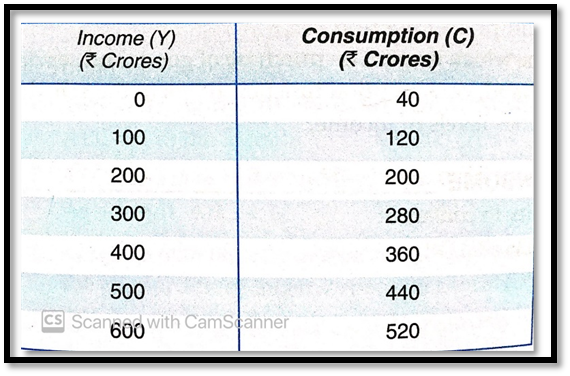CONSUMPTION FUNCTION
Definition: Consumption function refers to that portion of income, which is spent on the purchase of goods and services at the given level of income.
Consumption function expresses functional relationship between aggregate consumption and national income.
Thus, consumption (C) is a function of income (Y). C = f(Y)
Where, C = Consumption; f = Functional relationship; Y = Disposable income Consumption at a point of time can be measured with the equation:
According to Keynes, as income increases consumption expenditure also increases but increase in consumption is smaller than the increase in income. In other words, consumption lags behind income. This is called Keynes’ Psychological law of Consumption. According to Keynes, propensity to consume of the people remains stable in the short period.
Break-even point refers to that point in the level of income at which consumption is just equal to income. In other words, whole of income is spent on consumption and there is no saving. Below this level of income, consumption is greater than income but above this level, income is greater than consumption.
Consumption Schedule

Consumption Curve
In the given imaginary household schedule of consumption, at annual income level of Rs.200 Crore, consumption is Rs.200 Crore and in consequence, there is no
saving. This is break-even point.
It is evident from the table and diagram that:
As the income increases, consumption also increases, but the increase in consumption remains less than the increase in income.
Income can be zero but consumption can never be zero in the economy.
When C > Y, saving are negative.
When C = Y, savings are zero. This is known as break-even point. This is shown by intersection of blue and red line in the diagram.
Thus, break-even point indicates a point where consumption becomes equal to income or consumption curve cuts the income curve.

 PathSet Publications
PathSet Publications
